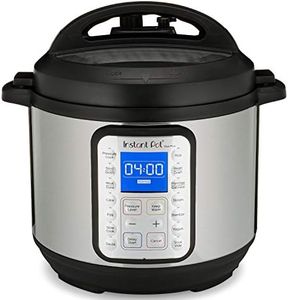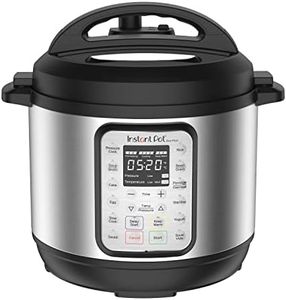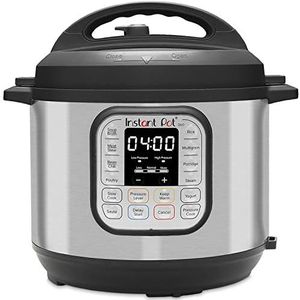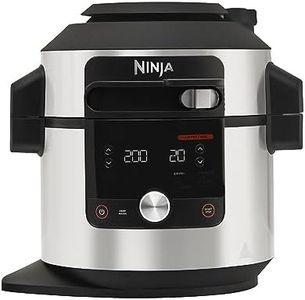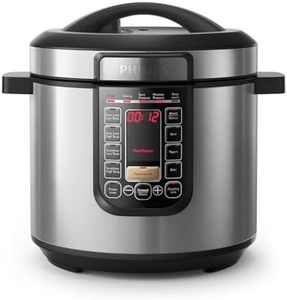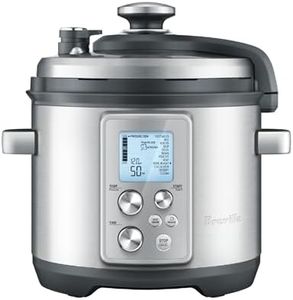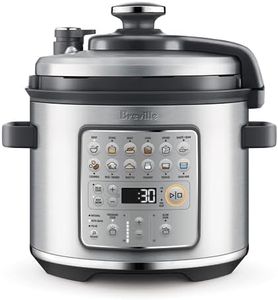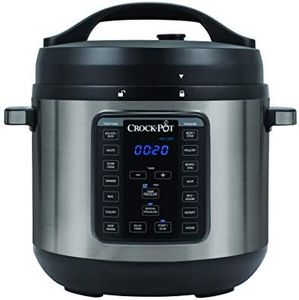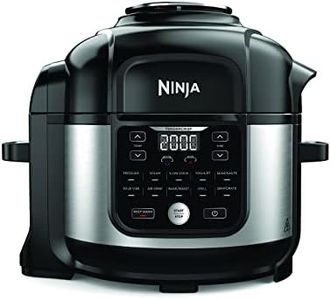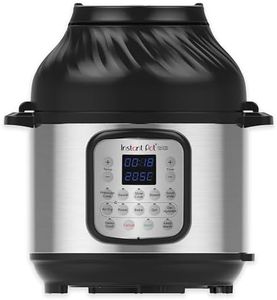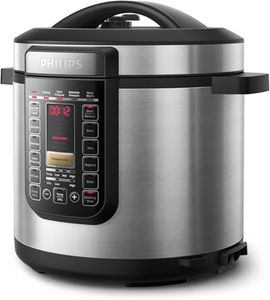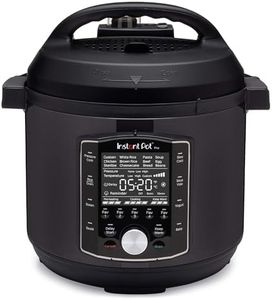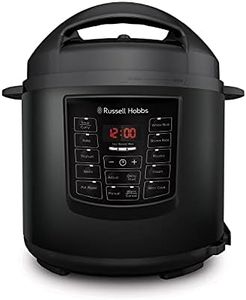We Use CookiesWe use cookies to enhance the security, performance,
functionality and for analytical and promotional activities. By continuing to browse this site you
are agreeing to our privacy policy
10 Best Electric Pressure Cookers
From leading brands and best sellers available on the web.Buying Guide for the Best Electric Pressure Cookers
Electric pressure cookers can completely change your kitchen routine by saving time and effort while cooking a wide variety of meals. Choosing the best one for you means considering how you'll use it, how much food you typically prepare, and what features will make your life easier. Think about whether you mainly want fast weeknight meals, need to cook for a crowd, or want the flexibility to try different recipes. Getting familiar with the main features and how they fit your lifestyle will help you pick the right model.CapacityCapacity tells you how much food the cooker can hold, usually measured in liters or quarts. This is important because it directly affects how many portions you can make at once. Small sizes (around 3 liters/quarts) are good for singles or couples, medium (about 6 liters/quarts) work for families of 3–5 people, and large (8 liters/quarts or more) are suitable for big families or gatherings. Think about how many people you usually cook for—going too small means you’ll have to cook twice, while too big may waste space and energy.
Preset Cooking FunctionsThese are built-in programs that let you automatically cook things like rice, soups, stews, beans, or even yogurt with one touch. The more presets, the more types of food you can prepare easily without guessing time and temperature. Simple models have a handful for everyday basics, while advanced ones include a wide variety for experimenting with different dishes. If you like convenience and want to multitask or try new recipes, more presets will be useful. If you mostly cook the same meals, you won’t need as many.
Pressure LevelsPressure levels control how fast and intensely the cooker cooks your food, usually offering low and high settings. This matters because certain foods need gentler pressure (like fish or eggs) while others (like beans or tough meats) benefit from higher settings for faster results. A simple model might only have high pressure, which works fine for most meals; more versatile cookers let you switch between levels for delicate or specific recipes. Consider your cooking habits—if you plan to try a range of foods, multiple pressure settings offer more control.
Safety FeaturesSafety features prevent accidents by controlling steam release, locking the lid when under pressure, and managing temperature. Look for cookers with automatic pressure release valves, lid lock indicators, and overheating protection. Basic models cover the essentials, but advanced ones may offer extra peace of mind if you’re new to pressure cookers or have children around. If you’re concerned about safety or want to feel confident using your cooker, pay close attention to these features.
Ease of CleaningThis refers to how simple it is to clean the pot, lid, and any extras that come with the cooker. Non-stick or stainless steel inner pots are usually easiest to clean, and removable parts that are dishwasher-safe save extra effort. Some cookers are more complicated with more parts to wash, while others are designed for quick cleaning. If you want to save time or dislike handwashing, choose one with a smooth, removable pot and minimal crevices.
Timer and Delay StartThe timer lets you set how long the cooker runs, and delay start allows you to set it up in advance so your food starts cooking later. This is useful if you like coming home to a warm meal or want to coordinate mealtime with your schedule. Not all models have both features. If your day is unpredictable or you like meal prepping in advance, these options offer greater flexibility and convenience.
